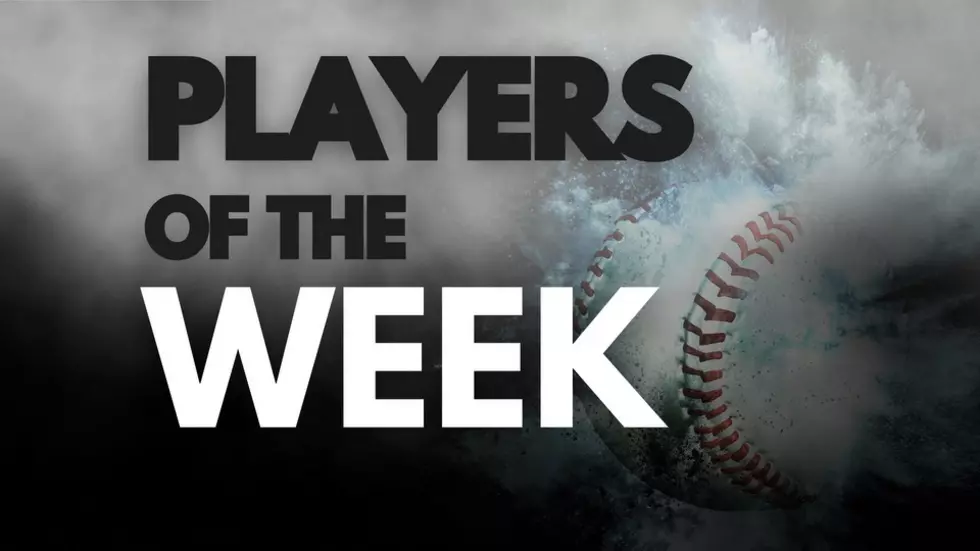
RYPT: Staying Game Ready During Covid-19 PART-4

Shore Sports Network Sponsored Content
RYPT: Staying Game Ready During Covid-19 PART-4
Written by Bobby Smith, MS, CSCS, *D, RSCC *D & Pat Livesey, MS, CSCS
The fourth and final pillar we are going to touch on in our Staying Game Ready during COVID-19series is: Nutrition and Recovery. This is arguably the most important pillar because it truly affects the previous 3 pillars. If our nutrition and recovery are not taken into consideration, it won’t matter how hard we train or how conditioned we are, our bodies will not perform at their highest level and we are putting ourselves at risk of injury. Making sure that we intake the proper protein, carbohydrates, fruits, vegetables and fats, as well as staying hydrated are crucial. Allowing your body to properly recover is also crucial for performance and injury prevention.
Let’s start with nutrition. We want to focus on five different food groups and making sure that we get the correct portion size for each. Protein, Carbs, Fruits, Vegetables, and Fats are all necessary but should be consumed in a certain balance. The easiest way we have found to measure portion sizes, without carrying around a scale or using tedious nutrition apps on our phones, is to utilize something we have with us at all times. Our Hand! Your hand is individualized to you, and it will always stay the same relative to the rest of your body, therefore, it is the perfect measuring tool to use when cooking or preparing food for yourself. Between Male and Females, the ratio is going to be 2:1 respectively so keep that in mind as we go over each food group.
Let’s talk protein first! Proteins are crucial to help rebuild and repair your body and contain the major building blocks of muscle. Proteins can come from both meat sources and non-meat sources, so although it is more difficult, even vegetarians cab get the necessary serving size! Protein from meat sources include chicken, beef, turkey, pork and so on, while non-meat sources include beans, seeds, eggs, dairy, nuts, and various nut butters. It is important to eat proteins during each meal, especially post-training or post-game. Our serving size for proteins will be our palms. Males should aim for 2 palms and Females should aim for 1 palm.
If we are going to be consuming a lot of proteins, we need to make sure we are balancing it with the second food group, carbohydrates. Carbohydrates are crucial for athletes as it provides our bodies with the energy we need to operate at the highest levels. Examples of carbohydrates that provide the body with great energy are whole grains such as whole wheat pasta, multigrain bread, and brown rice. Even if you are Gluten-free and unable to eat these whole grains, there are many carbohydrates that you can eat. Gluten free and carb free are not the same! Eat whole, unprocessed carbs like potatoes, quinoa, and rice. One of your primary sources of carbohydrates should be fruits and vegetables! They are filled with vitamins and minerals. Try and “eat the rainbow” but put extra importance on green leafy vegetables like broccoli, spinach, and kale. These are actually thermogenic so not only do they provide you with important nutrients, they also increase your metabolism! Our serving size for carbohydrates will be one “cupped handful” for females and 2 “cupped handfuls” for males. Although fruits and vegetables are carbohydrates, they are so important and useful that they are in a category of their own and do not “count” as your “cupped handful.” Try and eat one fist of veggies or one cupped handful of fruit with every meal.
The last food group to discuss is fats. Right away, many people see this as a red flag word because they think, “fat is bad,” or, “if I eat fat I will get fat.” Well we have news for you! Good fats are crucial for athletes as they provide us with energy when we run out of carbohydrates and provide vitamins that are important to our daily health. There is a clear difference between the good fats we want to eat and the processed fats that are on the shelves and in bags. Try to eat mixed nuts, seeds, avocados, and cook with olive oil. Try to avoid processed foods like chips, candy and anything packaged. If it doesn’t grow from the earth, try to avoid it, especially on training/game days. Our serving size for fats will be two thumbs for males and one thumb for females.
Lastly, we have to talk about hydration. Everyone needs to be properly hydrated throughout the day, especially athletes who are training hard and expect to perform at their highest potential. The recommended intake of water is also proportionate to each person. We should aim for at least half of our bodyweight in ounces each day. To make this simpler, if you weigh 100 pounds, you should aim to drink 50 ounces of water. We recommend drinking water throughout the whole day rather than only when you are thirsty. This will help your body stay hydrated at a safe rate and is much easier to intake the amount necessary. There is no better liquid to drink other than H20, regardless of what the label says on your sports drinks. If you are already dehydrated, then you may want to intake a sports drink to increase the rate of hydration, but if you rely on them, the extra sugars will begin to add up.
Nutrition is crucial for reaching our fitness and athletic goals. Proteins, carbohydrates, fruits, vegetables, fats, and water are all equally important in their own way. Please remember that if you have a dietary restriction or choose not to eat certain food groups, that is okay, this is a general guideline and should be modified to fit your specific needs. Your portion sizes are proportionate to your own body.
Lastly, but no less important, a brief note about recovery. When you put your body through a battle, weather on the field, on the court, or in the weight room, you need to let it recover. We do this by feeding it the building blocks it needs to repair the stress on the muscles (proper nutrition). We also need to give the body time to repair and recover. If you continuously beat your body up, there is a cumulative effect that can lead to serious injury. So, when you feel fatigued and sore, give yourself a break. If you feel the need to do something every single day, make sure there are a couple of days in the week when you do recuperative exercise such as yoga or a long stretching and foam roll session. There are several things that you can do to decrease muscle soreness. Try light non-impact cardio, such as riding a stationary bike or swimming.
If you prioritize nutrition and recovery, you will allow your body to function at its highest level, reduce the risk of injury, and be able to reach your potential.
How can I stay safe while grocery shopping? And answers to 24 other coronavirus questions
More From Shore Sports Network









